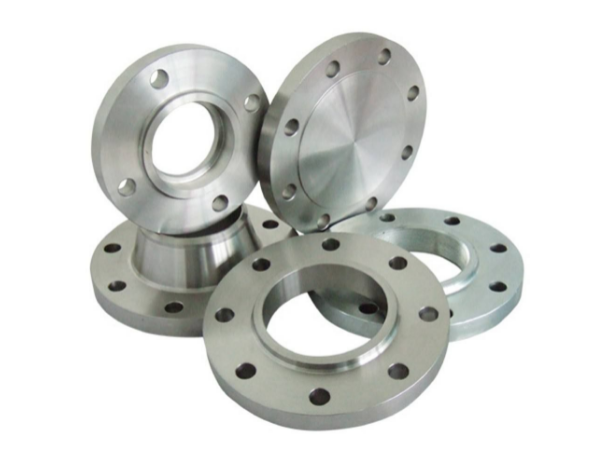Stainless steel flange
Stainless steel flanges are an essential component in many industries, particularly in the oil and gas, petrochemical, and chemical industries. They are used to connect pipes, valves, and other equipment in piping systems, allowing for easy maintenance, repair, and modification.
In this article, we will explore the various types of stainless steel flanges, their uses, and the benefits they offer.

Stainless steel flange
Types of Stainless Steel Flanges
There are several types of stainless steel flanges, each with its unique features and uses. Let's take a look at some of the most common types:
1.Weld-Neck Flange
Weld-neck flanges are the most popular type of stainless steel flange. They have a long tapered neck that is welded to the pipe, creating a strong, leak-proof joint. The neck also provides excellent stress distribution and reduces the risk of erosion and corrosion.
2.Slip-On Flange
Slip-on flanges are easy to install and are ideal for low-pressure applications. They slide over the pipe and are then welded in place. They are not as strong as weld-neck flanges and are not suitable for high-pressure applications.
3.Blind Flange
Blind flanges are used to close off the end of a pipe or valve. They are often used in applications where the pipe needs to be capped off temporarily or permanently. Blind flanges are available in various materials, including stainless steel.
4.Threaded Flange
Threaded flanges are designed to be screwed onto the pipe or valve. They are easy to install and are often used in low-pressure applications. They are not as strong as weld-neck flanges and are not suitable for high-pressure applications.
5.Lap Joint Flange
Lap joint flanges are used in applications where the piping system requires frequent disassembly and reassembly. They consist of two separate components: a stub end and a backing flange. The stub end slides over the pipe, and the backing flange is then bolted to the stub end.
Uses of Stainless Steel Flanges
Stainless steel flanges are used in a wide range of industries and applications, including:
1.Oil and Gas Industry
Stainless steel flanges are widely used in the oil and gas industry to connect pipelines and valves. They are designed to withstand high-pressure and high-temperature environments, making them ideal for offshore drilling rigs and refineries.
2.Petrochemical Industry
The petrochemical industry uses stainless steel flanges to connect pipelines and equipment in processing plants. The flanges are designed to withstand harsh chemicals and corrosive environments, making them ideal for a wide range of applications.
3.Chemical Industry
The chemical industry uses stainless steel flanges to connect pipelines and equipment in chemical plants. The flanges are designed to withstand high temperatures and corrosive chemicals, making them ideal for a wide range of applications.
4.Food and Beverage Industry
Stainless steel flanges are widely used in the food and beverage industry to connect pipelines and equipment. They are designed to withstand high temperatures and are easy to clean, making them ideal for food processing plants and breweries.
Benefits of Stainless Steel Flanges
Stainless steel flanges offer several benefits, including:
1.Corrosion Resistance
Stainless steel flanges are highly resistant to corrosion, making them ideal for use in harsh environments. They are designed to resist rust, tarnishing, and other forms of corrosion, ensuring that they last for a long time.
2.High-Strength
Stainless steel flanges are extremely strong and can withstand high pressures and temperatures. They are designed to provide a secure, leak-proof connection between pipes, valves, and other equipment.
3.Easy to Install
Stainless steel flanges are easy to install and require no special tools or equipment. They can be installed quickly and easily, saving time and money on installation costs.
4.Easy to Maintain
Stainless steel flanges are easy to maintain and require little to no maintenance. They are designed to withstand harsh environments and do not require regular cleaning or maintenance.
Conclusion
Stainless steel flanges are an essential component in many industries, providing a secure, leak-proof connection between pipes, valves, and other equipment. They are designed to withstand high pressures and temperatures and are highly resistant to corrosion, making them ideal for use in harsh environments. With their easy installation and low maintenance requirements, stainless steel flanges are a cost-effective solution for many industrial applications.
